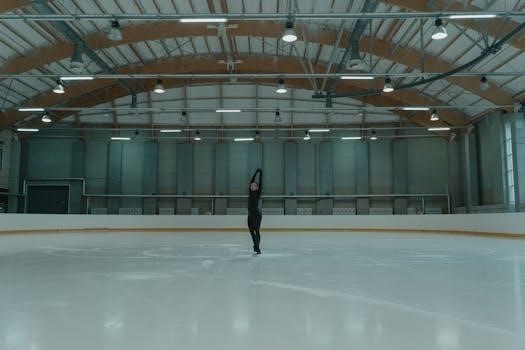
shin splints exercises pdf
Understanding Shin Splints
Shin splints, medically known as medial tibial stress syndrome, involve pain along the tibia. Repetitive stress on muscles and tendons surrounding the shinbone commonly causes this condition, especially in runners, dancers, and gymnasts due to high-impact activities.
Definition and Causes

Shin splints, often referred to as medial tibial stress syndrome (MTSS), are characterized by pain along the shinbone, or tibia. This pain typically manifests where muscles attach to the shin and is often experienced during and after exercise. It’s an overuse injury resulting from repetitive stress on the shinbone and surrounding tissues. Activities involving high impact and repetitive lower leg movements, like running, dancing, and gymnastics, commonly lead to shin splints.
Factors contributing to shin splints include sudden increases in exercise intensity or frequency, improper footwear lacking adequate support, and biomechanical issues. Weakness in hip or core muscles can also contribute, as can inflexibility. The pain can be located along the front and outside or the lower two-thirds of the inside edge of the tibia, depending on the specific type of MTSS.

Common Shin Splint Exercises
Specific exercises aid shin splint recovery and prevention by addressing muscle imbalances and strengthening lower leg tissues. Examples include calf stretches, soleus squats, step-ups, heel walks, and foot step holds, performed gradually and cautiously.
Calf Stretches (Wall and Towel)
Wall Calf Stretch⁚ Stand facing a wall with hands placed for support. Position one foot slightly behind the other, keeping the back leg straight. Gently lean forward, bending the front knee while keeping the heel of the back leg firmly planted on the ground. Hold the stretch for 25-30 seconds, feeling it in the calf muscle. Repeat multiple times daily.
Towel Stretch⁚ Sit on the floor with legs extended. Loop a towel around the ball of one foot, holding the ends of the towel with your hands. Gently pull the towel, drawing your toes towards your body while keeping your leg straight. Hold this stretch for 25-30 seconds, repeating several times each day. This targets the calf muscles and Achilles tendon, crucial for shin splint recovery.
Soleus Squats
Soleus squats are effective for strengthening the soleus muscle, a key component in shin splint rehabilitation. Begin by standing with feet shoulder-width apart. Gently slide down a wall until your knees are flexed to approximately 80 degrees. Ensure your heels remain in contact with the ground throughout the exercise.
From this position, slowly raise your heels off the ground, engaging the soleus muscle. Hold briefly, then gently lower your heels back down. Perform 3 sets of 8-12 repetitions. This exercise helps improve lower leg strength and stability, which are essential for preventing shin splints. Start slowly and gradually increase repetitions as your strength improves.
Step Ups
Step-ups are an excellent exercise to build strength in the legs, particularly beneficial for those recovering from or preventing shin splints. Begin by placing one foot on a box or step, ensuring it is stable. Step up onto the box, leading with the affected leg, and then step down with the same leg, returning to the starting position.
Perform 3 sets of 8-12 repetitions. As your strength improves, gradually increase the height of the box. Focus on maintaining good form and control throughout the exercise. Step-ups engage various muscles, promoting balance and stability, which are crucial for reducing stress on the shins. This exercise is excellent for strengthening the lower leg muscles.
Heel Walks
Heel walks are a simple yet effective exercise for strengthening the muscles in the front of the lower leg, which can help in both treating and preventing shin splints. To perform heel walks, stand tall and lift your toes off the ground, so you are balancing on your heels. Walk forward using only your heels, keeping your toes pointed towards the ceiling.
Take small, controlled steps and maintain a straight leg posture. Walk for about 20-30 seconds, then rest for 30 seconds. Repeat this exercise several times. Heel walks help engage the tibialis anterior muscle, which plays a key role in supporting the shin and reducing the risk of shin splints. Incorporating heel walks into your routine can contribute to overall lower leg strength and stability.
Foot Step Hold (Kneeling Stretch)
The foot step hold, often performed as a kneeling stretch, is beneficial for stretching the shin muscles and improving flexibility. Begin by kneeling on a mat with your buttocks resting directly over your heels. Ensure the tops of your feet are flat on the floor. This position should create a stretch along the front of your shins.
Hold this stretch for approximately 15 to 30 seconds, paying close attention to any discomfort or pain; While you should feel a stretch in your shins, avoid placing any strain on your knees. If you experience knee pain, adjust your position or discontinue the stretch. This exercise helps to increase the range of motion and reduce tightness in the shin muscles.

Preventative Measures
Preventing shin splints involves several key strategies. These include wearing proper footwear, gradually increasing exercise intensity, and incorporating non-weight-bearing exercises into your routine. These measures help reduce stress on the shinbone.
Proper Footwear
Selecting appropriate footwear is crucial in preventing shin splints. Proper footwear should provide adequate support and cushioning to minimize the impact on your shins during exercise. Consider shoes designed for your specific activity, such as running or dancing, and ensure they fit well.
Replace worn-out shoes regularly to maintain their supportive qualities. If you overpronate or supinate, consult a specialist for orthotics. Custom or over-the-counter orthotics can correct foot imbalances and improve alignment.
In addition to supportive shoes, cushioned insoles can provide extra shock absorption. Consider trying different brands and styles to find the most comfortable option for your feet. Remember, the right footwear can significantly reduce the risk of developing shin splints, allowing you to exercise pain-free.
Gradual Increase in Exercise Intensity
A gradual increase in exercise intensity is crucial to prevent shin splints. Avoid sudden spikes in activity, especially if you are new to exercise or returning after a break. Begin with low-impact activities and gradually increase the duration and intensity over time.
Implement a structured training plan that allows your muscles and tendons to adapt to the increasing demands. Gradually increase your mileage by no more than 10% each week.
Listen to your body and rest. Pay attention to any pain or discomfort in your shins. If you experience pain, reduce the intensity or take a break until the pain subsides. Rushing can lead to overuse injuries, but a slow build up will prevent injuries.
Non-Weight-Bearing Exercises
Non-weight-bearing exercises are helpful for shin splints as they allow you to maintain fitness without placing excessive stress on your shins. Activities like swimming, cycling, and water aerobics are excellent choices.
Swimming provides a full-body workout with minimal impact, while cycling allows you to control the intensity and reduce the strain on your legs. Water aerobics offers resistance training in a low-impact environment.
Incorporate these exercises into your routine to stay active while your shins heal. They promote blood flow and flexibility without exacerbating the condition. Combining these exercises with other methods help prevent shin splints from recurring.

When to Seek Medical Advice
While many cases of shin splints resolve with rest and home care, it’s crucial to know when to seek professional medical advice. If your shin pain persists for more than a few weeks despite self-care measures, consult a doctor or physical therapist.
Seek immediate medical attention if you experience severe pain, numbness, or tingling in your leg or foot. These symptoms could indicate a more serious condition, such as a stress fracture or compartment syndrome.
A healthcare professional can accurately diagnose your condition, rule out other potential causes of your pain, and recommend an appropriate treatment plan to ensure a full recovery.